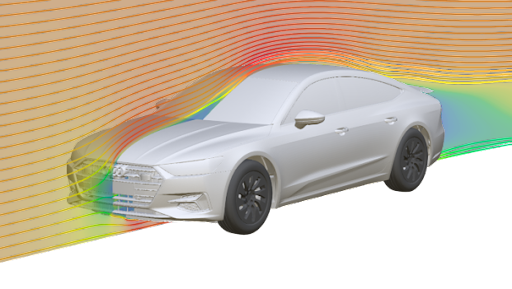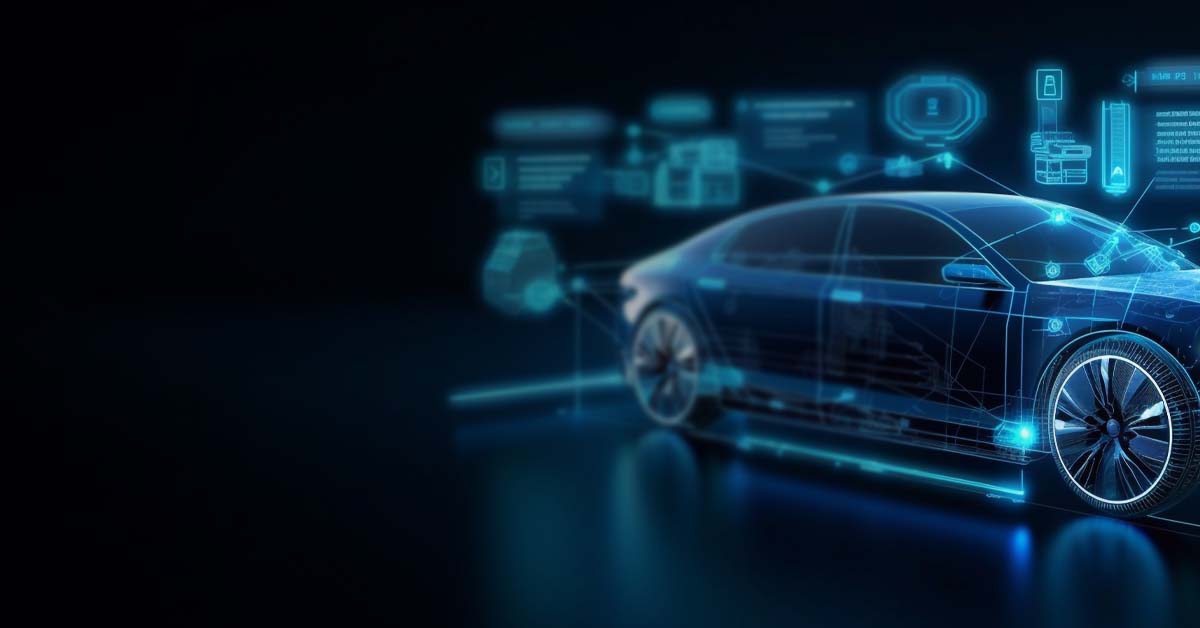In the future, Artificial Intelligence (AI) will seamlessly integrate with human expertise to drive engineering design.
As technology advances with each passing day, artificial intelligence is gradually becoming an integral part of the engineering sector. It is no longer just an additional tool but a key driver transforming how we approach engineering.
Generative AI innovations offer a competitive edge and ease of adoption, according to the 2023 Gartner Hype Cycle for Artificial Intelligence [1]. According to Gartner, companies with advanced AI capabilities can increase their revenue significantly [2]. According to Gartner, the inflated expectations for generative AI will contribute to the progress of AI engineering [1].
The AI Revolution in Engineering Design
Our recently published blog post discussed how engineering and product development processes are transforming through “Real-Time Physics Predictions Empowered by AI”. Today’s post aims to provide engineers and decision-makers with relevant knowledge and insights to understand the potential for and quantify the impact of AI on their operations.
Challenges such as lengthy design processes, resource-intensive simulations, and a lack of real-time feedback have always existed in engineering.
However, AI has emerged as a solution to these problems, providing novel solutions that lift the efficiency of the development process. This blog post will explore the top five benefits of integrating AI into engineering design processes. This will give you a glimpse into a world where waiting for results is a thing of the past.
5 Benefits of Using AI-Driven Engineering Design
It’s essential to recognize that many engineers and professionals are unaware of the benefits of AI-driven engineering design solutions.
AI-driven engineering design solutions offer a competitive edge and ensure relevance in a rapidly evolving industry.
However, waiting to hop onto the AI-driven train until after the transformation could mean missing out on the significant advantages of these solutions in terms of increased efficiency, accuracy, and cost savings.
1. Accelerated Engineering Workflows
AI has considerably shortened the time it takes to move from concept to prototype and to iterate designs. This is particularly significant for industries such as automotive and aerospace, where design cycles can be lengthy, and time is a critical factor due to approval processes and fixed dates for the start of production.
AI-driven tools can help to significantly accelerate the design processes, enabling faster product development and market readiness. Therefore, AI tools must be seamlessly integrated into existing workflows.
For instance, the NAVPACK software package, powered by AI algorithms, has transformed the development cycles for several customers by improving efficiency and speed by closing the loop between real-time results for aerodynamics analysis, generative design and optimization algorithms. This enables engineers to find solutions in seconds instead of hours or days.

2. Maximized Insights from Existing Data
AI has opened up new opportunities for creative exploration of the design space in engineering. It enables engineers to generate and evaluate various design possibilities automatically.
Generative design is an algorithmic approach that uses input design variables to develop feasible designs. At the same time, machine learning helps designers generate creative options and find designs that best fit their needs. Through optimization algorithms and machine learning techniques, engineers can automate finding optimal design configurations, saving time and money.
Optimization towards the best aerodynamic performance can be challenging when trying to find optimal designs with limited amounts of computational fluid dynamics (CFD) simulations. Some Formula 1 teams use NAVPACK to train AI models on CFD data, enabling them to predict results for unseen geometries instantly. This maximizes insights and reduces lead time for results, making it a game-changer in aerodynamic design processes.

3. Improved Product Performance and Functionality
AI can analyze and predict product performance, resulting in designs that are not only efficient but also functionally superior. By accurately analyzing performance parameters, AI aids in making more informed design decisions, leading to products that meet higher functionality and user experience standards.
An excellent example of AI-driven quality enhancement is an Intelligent 3D printer System developed by engineers at the University of Cambridge. With real-time error detection and correction capability based on machine learning, this printer system can even adapt to new materials it was not trained on.
In another customer success story, NAVASTO solved the problem of finding the optimal position for an active spoiler for AUDI AG using only 32 samples from a Design of Experiments and Surrogate-Based Optimization. The AI model found an improved spoiler with the same aerodynamic performance without additional simulations.

4. Cost-effectiveness and Sustainability
According to a report by PwC, AI is expected to contribute up to $15.7 trillion to the global economy by 2030, with cost savings being a significant factor [3].

AI-powered predictive analytics optimize resource allocation, schedule proactive maintenance, and generate cost savings, improving efficiency and decision-making. AI significantly contributes to economic efficiency as a formidable assistant in reducing material waste and production costs [4].
AI also drives cost-effectiveness by automating repetitive tasks and enhancing precision in engineering drafting. In addition, AI-driven engineering can significantly reduce the need for costly and time-consuming CFD simulations. NAVPACK helped an America’s Cup team cut their need for simulations by 85%. This allowed instant predictions for sail geometries and wind angles, reducing waiting time by weeks and enabling continued exploration of options without running first-principle-based simulations.

5. Collaborative Intelligence
The engineering field has become increasingly reliant on AI, which offers engineers a range of valuable tools and resources. Integrating human and artificial intelligence (AI) to achieve better outcomes in various fields is generally known as collaborative intelligence. By analyzing massive amounts of data, AI algorithms can help engineers solve complex problems. The application of AI-human collaboration is increasing in sectors like healthcare and search and rescue missions, which enhances decision-making and outcomes [5].
Collaborative Intelligence refers to the combined strengths of humans and AI. Humans are crucial in training machines, explaining their outputs, and ensuring responsible use. On the other hand, AI can enhance human cognitive abilities, relieve workers from menial tasks, and extend their physical capabilities [6].
To optimize collaboration between humans and AI, according to Harvard Business Review, companies should follow five key principles: “Reimagine business processes; embrace experimentation/employee involvement; actively direct AI strategy; responsibly collect data; and redesign work to incorporate AI and cultivate related employee skills”. A survey of 1,075 companies found that the more principles they followed, the higher their performance improvement measured in operational metrics [6].

Addressing the Misconception of AI as a Threat to Engineers:
Before concluding the blog, addressing a common misconception that AI threatens engineering jobs is crucial.
AI-driven design should be viewed not as a replacement for engineers but as a tool that augments their capabilities. Integrating AI in engineering processes leads to more efficient workflows, freeing engineers to focus on more creative and strategic aspects of their work.
Furthermore, AI can open up new opportunities for innovation and problem-solving that were previously unattainable, leading to an expansion of the engineering field rather than its contraction.
🔗See what the CEO of NAVASTO, Matthias Bauer, has to say about this misconception in this podcast episode.
Conclusion: Embracing the AI-Driven Future
As NAVASTO stands at the forefront of this AI revolution in engineering, it’s clear that AI-driven design is not just a futuristic concept but a present reality transforming the engineering landscape. We invite you to explore NAVASTO’s AI solutions and join us in this journey of innovation and efficiency. Discover how AI can redefine your engineering processes – because the future of engineering is here, and AI powers it.
Get in Touch With the NAVASTO Team
Sources:
[2]https://www.gartner.com/en/topics/generative-ai
[3]https://www.pwc.com/gx/en/issues/analytics/assets/pwc-ai-analysis-sizing-the-prize-report.pdf
[5]https://www.csiro.au/en/news/all/articles/2023/july/collaborative-intelligence
[6]https://hbr.org/2018/07/collaborative-intelligence-humans-and-ai-are-joining-forces
